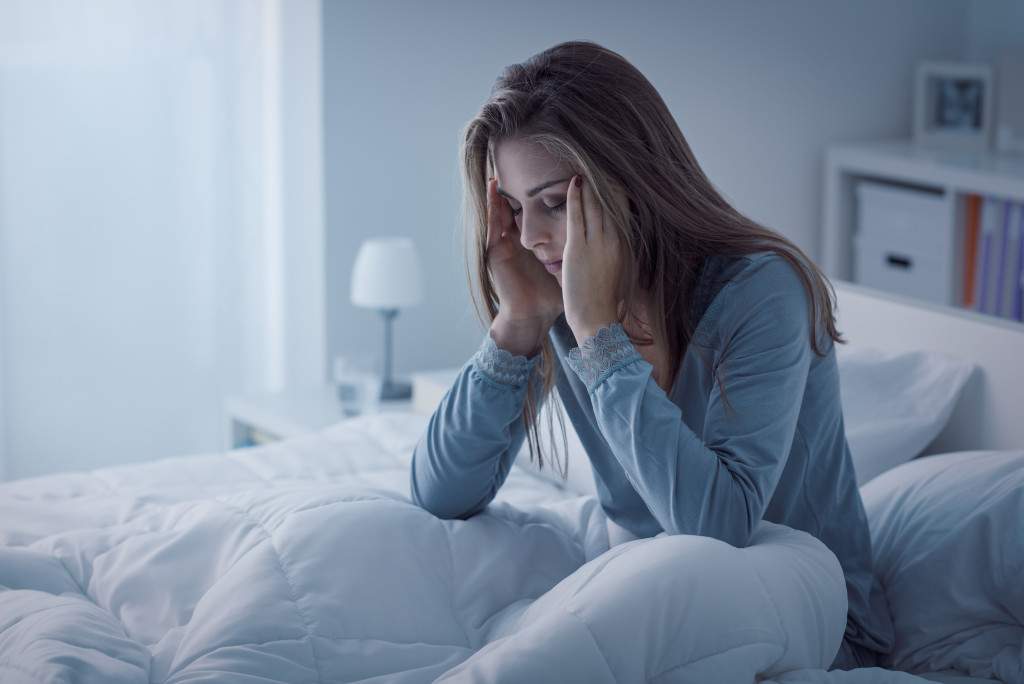The most prevalent sleep disorders are insomnia and obstructive sleep apnea (OSA). Insomnia is the most common of all medical illnesses, with about 10% of adults in the United States suffering from it.
The prevalence of OSA has been estimated to be 2-4%, higher than previously thought. Many people do not realize they have a problem until their partner complains or experience excessive daytime fatigue.

What Happens When People Don’t Get Enough Sleep?
Lack of sleep can affect your mood, judgment, learning and retaining information, and coordination. It also increases your risk for accidents at work and while driving. Chronic sleep deprivation has been linked to obesity, diabetes, heart disease, and cancer.
Sleep deprivation can have severe consequences for drivers. People who don’t get enough sleep are as impaired as those who drive drunk.
Among the common causes of sleep problems are stress, side effects of certain medications, caffeine dependence, restless leg syndrome (RLS), and depression.
The most common treatment for insomnia is sedatives, which only work temporarily. They are also addictive and have multiple other side effects.
The Severity of Sleep Problems
Sleep problems can affect many aspects of life, including mood, cognitive function, cardiovascular health, weight control, and even cancer risks. Over $32 billion a year is spent on medical treatments and lost productivity related to sleep disorders in the US.
There are many treatments for sleep disorders, both pharmacological and non-pharmacological. Pharmacological treatments include prescription medications and over-the-counter medications. Non-pharmacological therapies include cognitive behavior therapy (CBT), stimulus control therapy, sleep hygiene education, and progressive relaxation therapy.
The Four Main Sleep Disorders:
1) Insomnia (difficulty falling or staying asleep)
2) Narcolepsy (excessive daytime sleepiness and sudden attacks of sleep during regular waking hours)
3) Parasomnia (sleepwalking, night terrors, etc.)
4) Periodic limb movement disorder (PLMD; this is a disorder of movement during sleep that causes repetitive jerking of the limbs)
Modern Remedies and Treatment for Sleep Problems
There are many ways to treat sleep problems. Some people may need medication, while others may need therapy or a change in their daily routine.
One common type of therapy is cognitive-behavioral therapy, which helps people learn how to change how they think about sleep and better manage their time. This type of therapy can be beneficial for people with insomnia.
Several medications can be used to treat sleep problems. Some of these medications are designed to help people fall asleep, while others help people stay asleep. It is essential to talk to your doctor about the best medicine for you.
In addition to medication and therapy, you can also do many things to improve your sleep. For example, you can make sure that you get enough exercise and avoid caffeine and alcohol before bed. You can also try to go to bed and wake up simultaneously every day.
If you are having trouble sleeping, it is essential to see your doctor.
How Technology Can Help People With Sleep Issues
Technology can also be helpful if one has problems with insomnia or sleep disorders. You can do some things to help get your mind off of your worries and help relax you before you go to bed.
Reading technology-based news and PR announcements will help you stay abreast of technology developments and updates regarding sleep therapy and treatment for sleep disorders.
Something that is considered suitable for insomnia patients is sensory deprivation therapy. The patient goes into a room with very little light, sound, or anything else in it. This will allow your body and mind to relax so that when they are in their bed, they can fall asleep easier.
Another thing that patients have tried is biofeedback therapy. For this type of therapy, the patient must focus on their body’s natural functions to help them relax, so they are tired enough to sleep well. One example of how it works is you hook up leads from an electronic device onto your head that acts somewhat like a brain wave monitor.
During your therapy sessions, you will be shown sounds and lights on the device representing real-time feedback of your brain activity. Your therapist will talk to you through headphones during this process to focus enough to understand what is going on with your body.
This way, it is easier for you to see what is going on with yourself and help it. Eventually, you will be able to do this on your own and feel more relaxed before you go to bed so that when your head hits the pillow, and comfortable sleep comes over you.
You can always talk with a doctor about these things or other ways to help yourself sleep at night.
CBT is a good form of treatment as it helps people learn how to change their thinking and behaviors. Sensory deprivation therapy and biofeedback therapies can also help some, as well as making sure the body is relaxed before sleep (exercise, caffeine, etc.). Technology such as brain wave monitors can be used to help those with insomnia to relax before bed.

